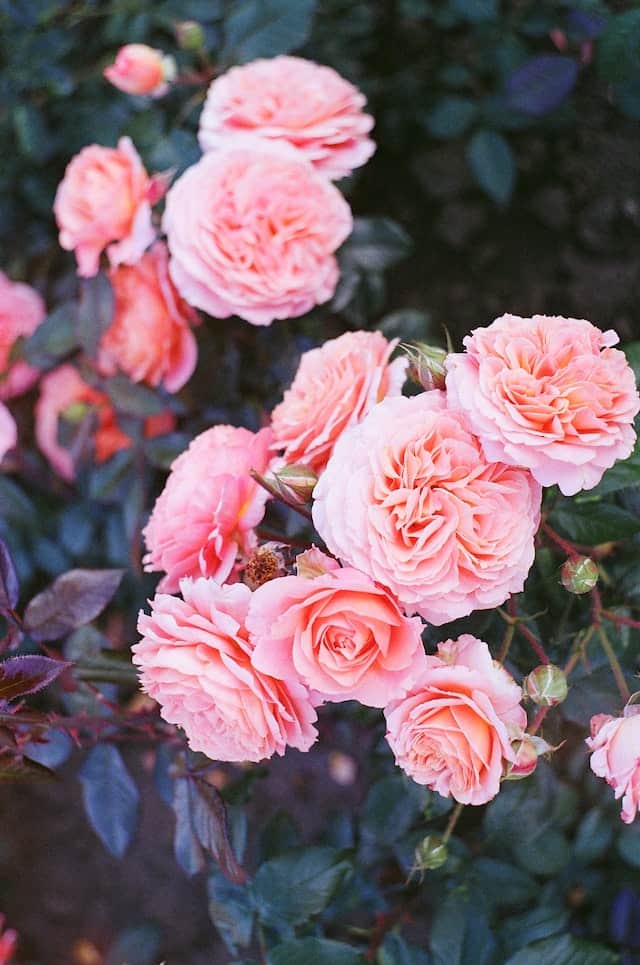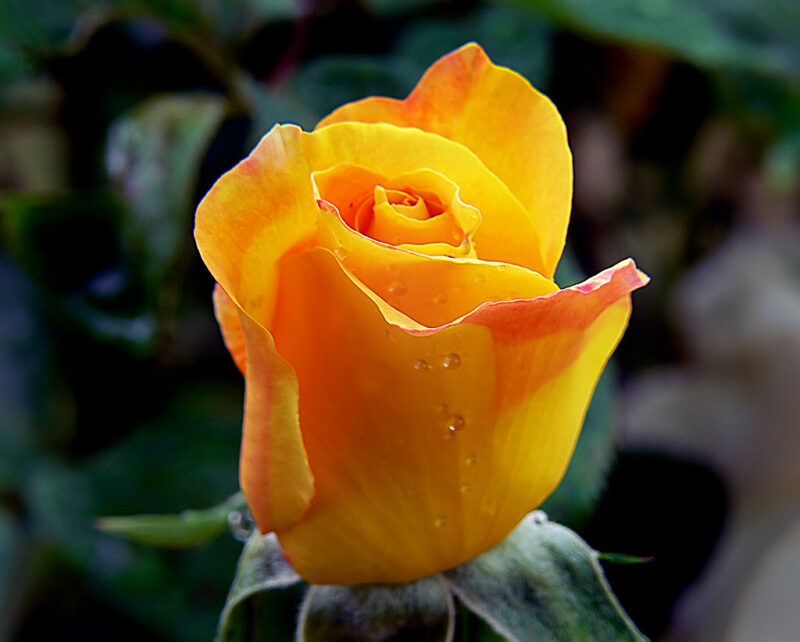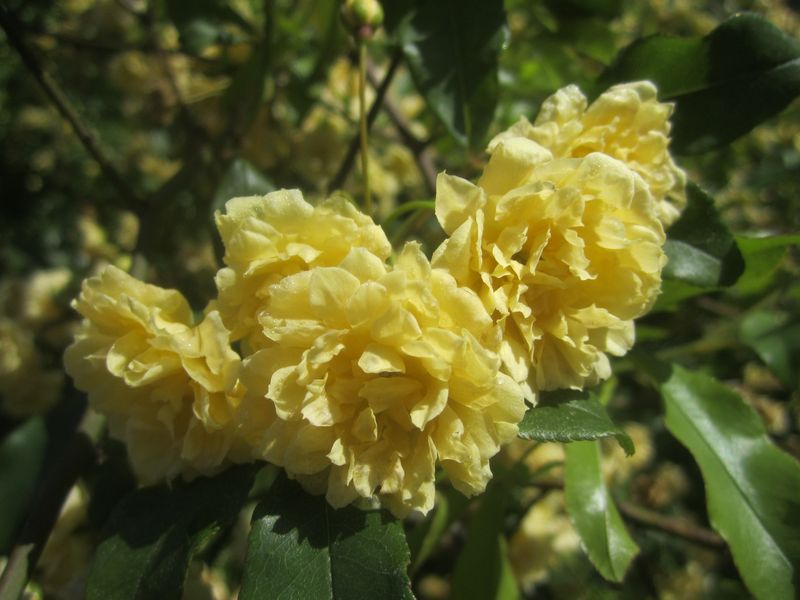Can roses truly thrive in shade? In this guide, we will dig into the nuances of growing roses in shaded environments, discussing their light requirements, the types of roses that may flourish in such conditions, care strategies, and the impact of shade on rose health and flowering.
Understanding Rose Varieties and Light Requirements

Before we delve into the complexities of growing roses in shade, it’s essential to understand the different types of roses and their distinct light requirements. Generally, roses fall into several categories, including hybrid tea roses, floribunda roses, climbing roses, and shrub roses. Most of these varieties thrive in full sun, requiring at least 6 to 8 hours of direct sunlight daily for optimal growth and flowering.
However, certain types of roses exhibit remarkable adaptability and can tolerate partial shade. Some of the rose varieties that are more shade-tolerant include:
Old Garden Roses: This category includes varieties such as Damask, Bourbon, and Portland roses, which have a history of cultivation dating back to before the 19th century. Their resilience allows them to flourish with fewer sunlight hours than more modern varieties.
Shade-tolerant Shrub Roses: Varieties like the ‘Knock Out’ rose series are known for their robust nature. These roses can perform reasonably well in partial shade, exhibiting a degree of resilience against less-than-ideal conditions.
Climbing Roses: While they can grow in sunny gardens, certain climbing roses like ‘New Dawn’ demonstrate the ability to thrive in dappled sunlight, making them suitable for covering trellises or fences in shadier spots.
Ground Cover Roses: Varieties such as ‘The Fairy’ are low-growing and can adapt to some shade, making them perfect for filling in garden spaces and softening edges.
Understanding the characteristics of these varieties can guide gardeners in selecting suitable roses for their specific environmental conditions, moving us one step closer to the question of shade tolerance.
Analyzing Shade Types

The term “shade” can be somewhat ambiguous, as it encompasses various conditions: full shade, partial shade, and dappled sunlight. Each type of shade offers different light levels, which can deeply affect rose growth.
Full Shade: Areas that receive less than 3 hours of direct sun daily can be classified as full shade. Unfortunately, this condition is generally not conducive to growing most rose varieties. Roses need sunlight for photosynthesis and to generate energy for growth and blooming. If you have full shade areas, consider consulting with a gardening professional to explore alternative plants suited for these conditions.
Partial Shade: This scenario allows for 3 to 6 hours of sunlight per day, usually filtered through trees or structures. This is the sweet spot for many shade-tolerant rose varieties. If your garden receives partial shade, you might successfully incorporate roses that can adapt to these conditions.
Dappled Sunlight: This condition involves light filtering through trees, resulting in a pattern of sun and shade. Many gardeners find that dappled sunlight provides the best conditions for growing roses, allowing these plants to enjoy intermittent sunlight that mimics their natural habitats.
Understanding the nuances of shade in your garden is essential for determining the best type of roses to plant.
Choosing the Right Location

When considering growing roses in a shaded area, site selection becomes paramount. While roses are infamously known for their sun-loving requirements, several factors can influence their success even in less sunny conditions. Consider the following elements:
Soil Quality: Ensuring that the soil is rich in organic matter, properly drained, and slightly acidic to neutral (pH 6.0 – 6.8) can significantly impact rose health. Conducting a soil test can help assess nutrient levels, allowing you to amend the soil appropriately before planting.
Airflow: Roses need good airflow to remain healthy. Shaded areas with poor ventilation can create a humid environment, promoting diseases like powdery mildew and black spot. If planting in shade, ensure there’s enough space for air circulation.
Watering: Shaded areas may retain moisture longer than sunny spots, increasing the risk of root rot. Understanding local weather conditions, moisture levels, and drainage will help ensure your roses receive adequate hydration without oversaturation.
Choosing the right location not only involves identifying shade levels but also considering the overall conditions your roses will face.
Care Strategies for Shaded Roses

Growing roses in shade requires a tailored approach to care, ensuring these plants receive what they need to thrive despite less than optimal light conditions. Here are essential care strategies to foster healthy, beautiful blooms:
1. Pruning for Light Penetration
Regular pruning is vital for roses, particularly when they are growing in shaded areas. Proper pruning removes dead or overcrowded stems and promotes better air circulation, which can help manage fungal diseases. By selectively cutting back branches, you can allow more light to reach the inner parts of the plant.
2. Choice of Fertilizers
Fertilizing shaded roses can differ from fertilizing sun-loving varieties. Look for slow-release fertilizers that will provide nutrients throughout the growing season without causing excessive growth that could lead to leggy or spindly plants. Organic compost is excellent, as it enriches the soil and supports overall plant health while improving moisture retention.
3. Mulching
Applying mulch around your rose plants helps retain moisture, suppress weeds, and maintain an even soil temperature favorable for root development. Organic mulches, like wood chips or shredded bark, also gradually break down, enriching the soil over time.
4. Watering Practices
Monitoring and adjusting your watering habits will help counteract the potential issues of cooler, damper environments found in shaded areas. Always check the soil moisture before watering and ensure you’re not over-watering. Ideally, roses benefit from deep watering that encourages strong root systems.
The Impact of Shade on Pest and Disease Management

While shaded environments can reduce the intensity of sunlight many pests thrive in, they can also create conditions conducive to diseases. Understanding how to manage both pests and diseases is vital for ensuring the health of your roses.
Pest Management
Aphids: These soft-bodied insects love new growth, regardless of sun exposure. Regular inspection and the introduction of beneficial insects such as ladybugs can help keep their populations in check.
Spider Mites: These arise in dry conditions often indirectly linked to shade—especially if air circulation is limited. Keeping the foliage dry and regularly checking for signs of webbing can help mitigate infestations.
Disease Prevention
Powdery Mildew: A common ailment in shade-loving roses, this fungal disease flourishes in humid conditions. Encourage airflow through pruning and avoid overhead watering.
Black Spot: Characterized by dark spots on the leaves and early leaf drop, black spot can be managed by ensuring your roses have sufficient air circulation and keeping the foliage as dry as possible.
Choosing resilient varieties and maintaining vigilant care will go a long way in battling potential health issues linked to shade.
Compensating for Limited Sunlight

Although roses are notoriously fond of sunlight, ingenious gardening practices can help mitigate the effects of shade. Here are some creative strategies to boost your rose’s success in low-light conditions:
1. Companion Planting
Incorporate companion plants that can complement your roses while also improving the overall soil quality and garden ecology. Plants such as lavender, catmint, and salvia can repel pests without overtaking space needed by your roses.
2. Utilize Reflective Surfaces
Installing reflective materials like white stones or light-colored garden decor nearby can bounce some light onto your roses. Also, consider using mirrors or reflective garden ornaments to maximize the sunlight they do receive.
3. Training Twining Plants
If space allows, consider planting climbing roses near trellises or arches that can help stretch them towards light sources, particularly if nearby trees are casting shade. Training your roses upward can help them capture more sun and thrive.
4. Seasonal Adjustments
Rotating your planting approach with the seasons can maximize the effectiveness of your gardening strategies. In early spring or late fall, the sun’s angle changes, allowing more sunlight to reach shaded areas, potentially providing additional light for your roses.
Success Stories: Real Gardeners Share Their Experiences

As we navigate the topic of growing roses in shade, it’s invaluable to hear from avid gardeners who have successfully surpassed the challenges of shaded areas.
Sarah from the Pacific Northwest shared her experience with her shade garden filled with ‘Knock Out’ roses. With the combination of dappled light amidst her towering Douglas firs, she noted that while they didn’t bloom as profusely as those in sunnier sections, they still brought a delightful splash of color and fragrance to her patio.
Carlos in Southern Texas faced extreme heat and limited water access, forcing him to cultivate roses in a shaded courtyard. Emphasizing the importance of selecting heat-resistant varieties, he successfully grew climbing roses, which thrived as they wrapped around his garden lattice, creating a green and colorful backdrop.
These real-life stories showcase the potential for roses to flourish in shade under the right circumstances, providing hope and inspiration to gardening enthusiasts considering similar conditions.
Conclusion: Roses and the Dance of Light and Shade
So, can roses grow in shade? The answer is nuanced, with possibilities depending on the variety of rose, the type of shade prevalent, and the gardener’s ability to adapt care strategies and embrace innovative solutions.
While full shade may not be ideal for roses, partial shade and dappled sunlight present opportunities to cultivate a unique and charming rose garden. Select the right varieties, ensure robust soil conditions, play with pruning techniques, and manage pest and disease risks diligently. By doing so, you can turn your shaded garden space into a blooming haven of color and fragrance, proving that even roses can find a way to thrive amidst the shadows.





